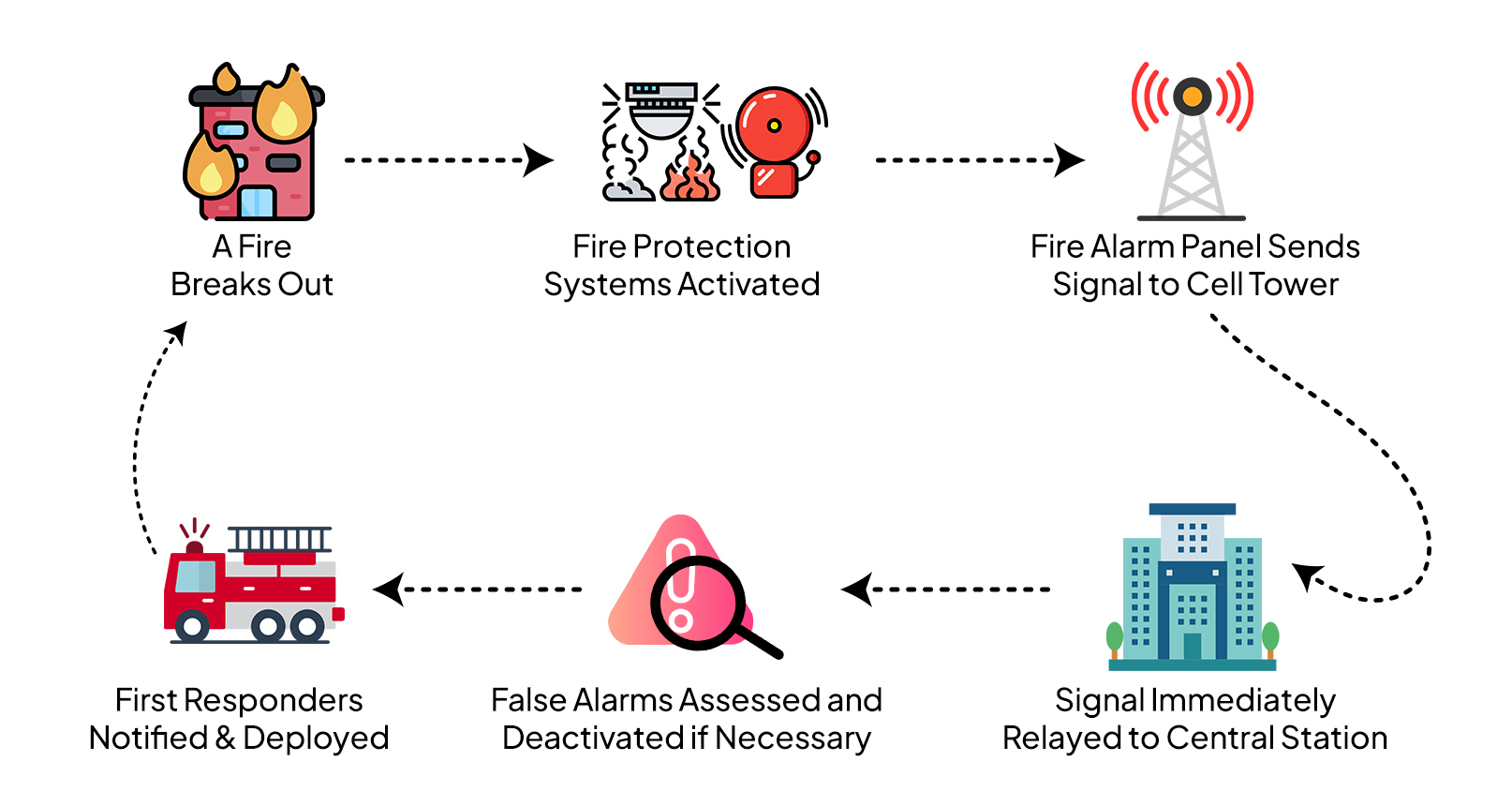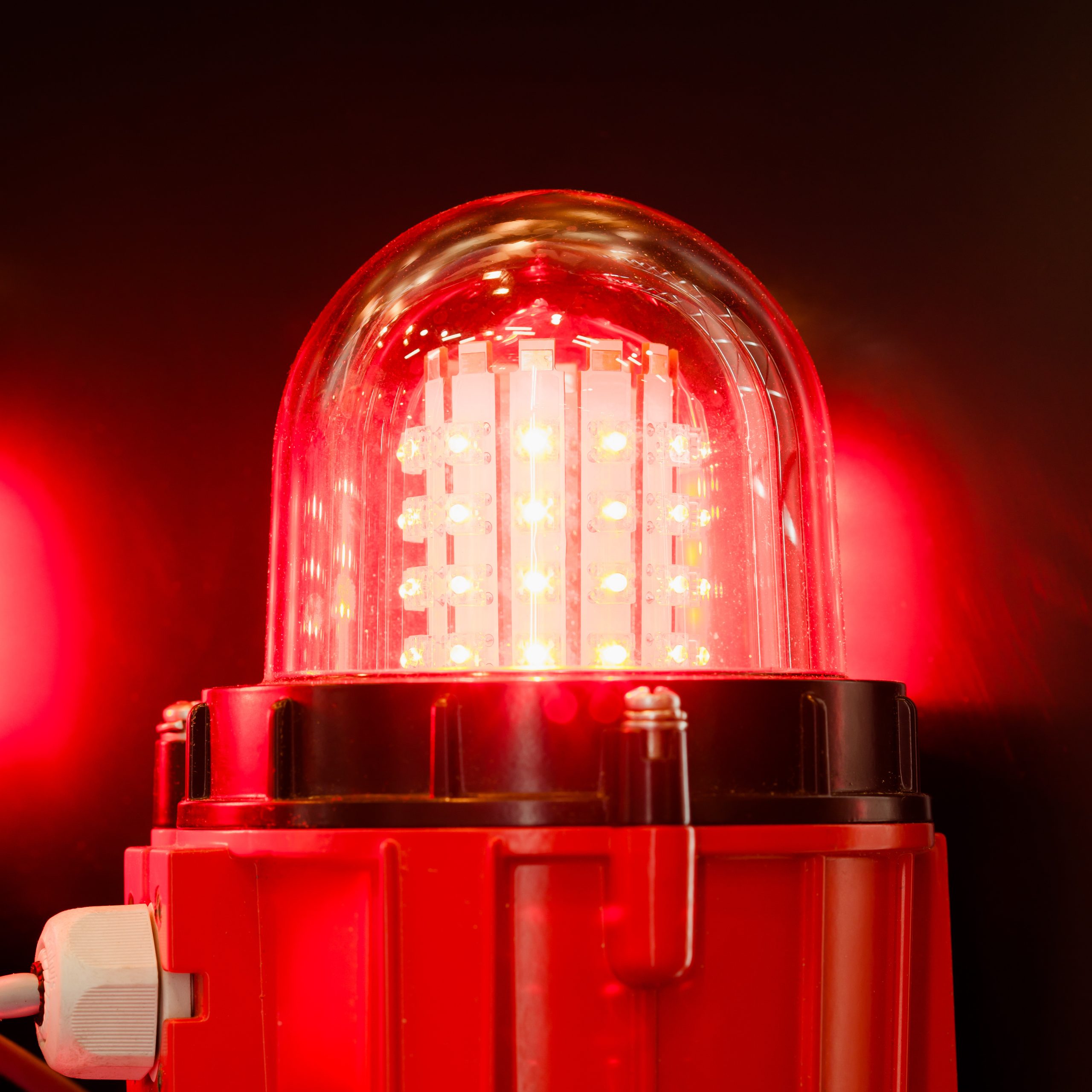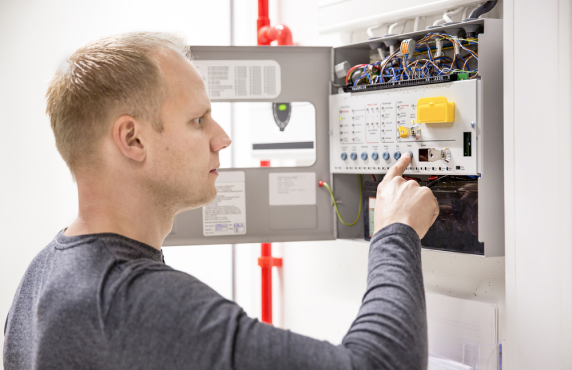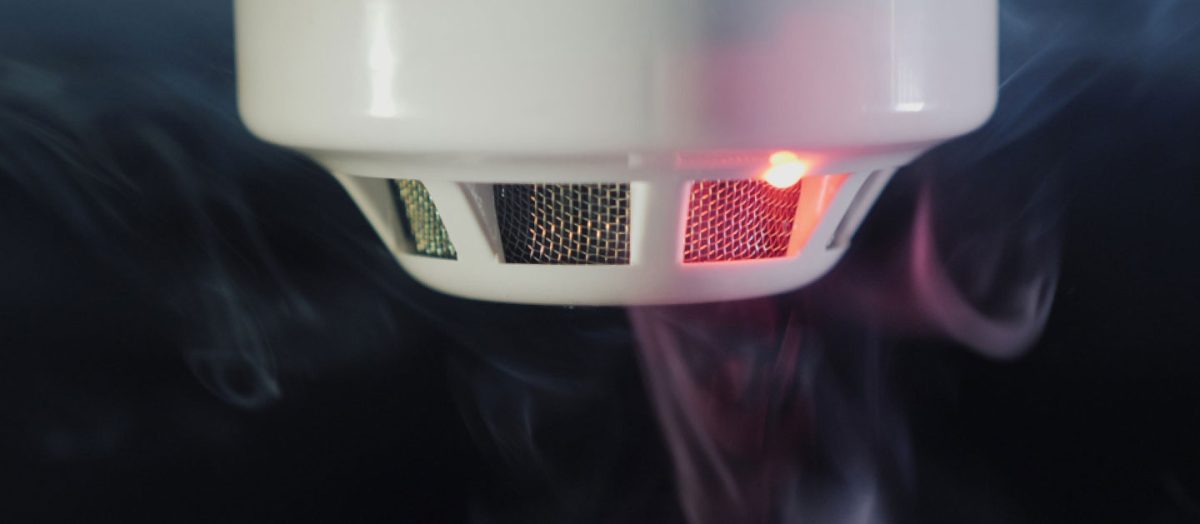
S1 Fire offers quick and responsive fire alarm monitoring services, to ensure that your property remains secure at all times. Our locally staffed control centre operates 24/7, providing immediate assistance whenever needed. With real-time alerts, detailed reports, and expert coordination, we act swiftly to protect your premises. In the event of an alarm activation, our highly trained Monitoring Centre Operators respond immediately to assess the situation and take necessary action. Our commitment to rapid response and advanced monitoring tools ensures your security system delivers reliable protection when it matters most.
Benefits of Fire Alarm Monitoring
When your fire alarm system is professionally monitored, you gain more than just alerts, you gain

24/7 Fire Protection
Continuous monitoring to keep your property safe

Enhanced Safety
No need for employees to handle alarm activations.

Minimised Business Disruption
Farly detection helps prevent major damage

Immediate Emergency Response
Quick action when an alarm is triggered

Fewer False Alarms
Only confirmed alerts lead to action.

Clear reporting
Real-time updates and detailed reports for every activation.
How does Fire Alarm Monitoring Works


S1 Alarm Monitoring
Alarm Signaling Equipment Monitoring
S1 Fire monitoring operates 24/7 from its A1 graded monitoring centre.
Installation of Alarm Signaling Equipment (ASE) which is the red box that sits inside your fire panel allows Emergency Services to monitor your buildings fire equipment. Any changes with the status of your fire protection system activates the ASE to send signals to our monitoring centre, where our team responds accordingly.
S1 Fire monitoring will be automatically alerted of any fire alarm activation within your building, once an alarm is activated our monitoring team will dispatch the appropriate responder to your building.

The S1 Fire Monitoring ASE is the latest fire Alarm Signaling equipment and manufactured in Australia. This unit is designed to connect to a fire alarm system, in which the fire alarm system will trigger inputs on the main FCM. This will then display any faults onto the LEDs and LCD, with easy to confirm and read.
The FCM Control unit is in constant timed polling communications on 2 separate communication paths via two 4G networks to two Cloud Servers. The ASE integrity status and alarm communications are via 2 separate SQL Cloud Servers, who then process the communications for a further relay into an approved control room automation and then onto the fire brigade via the control centres own interface.
Avoiding false alarms
The Emergencies Act 2004 Section 201 (Determination of fees) allows ACTF&R to charge for attending false alarm callouts to monitored AFA systems. This charge is intended to motivate building owners and managers to be continually pro-active in managing their AFA systems and to ensure that they are properly maintained. It has been demonstrated that properly maintained systems assist in reducing the number of false alarms attended by ACTF&R allowing them to respond more readily to genuine emergencies
For building owners or managers
- The primary cause of false alarms is poorly maintained fire systems. ‘A proper maintenance standard’ is required pursuant to the ‘Emergencies ACT 2004’ & ‘AS:1851- Routine service of fire protection systems and equipment’.
- In some circumstances a change of detector type, sensitivity or location may also reduce unwanted alarm activations. There are several specialist companies who can provide advice on options. ACTF&R Fire Safety section may also be contacted for advice.
- Implementation of well-regulated workplace protocols can also be effective in reducing false alarms. For example; Contractors carrying out building or maintenance work should be inducted into the workplace with building owners/ managers ensuring appropriate isolation of AFA systems where required.
For occupants, tenants or guests
- Before cooking or showering, activate exhaust fans and were possible, open vents or windows.
- Avoid using aerosols sprays (deodorant/ hairspray etc) in close vicinity to detectors.
- Avoid the use of smoking materials in close vicinity to detectors.
For contractors, cleaners, or maintenance staff
- Ensure building owners/ managers are aware of any work being carried out in the vicinity of detectors, and that appropriate isolation of AFA systems are implemented where required.
- Avoid activities that may damage or disrupt smoke detectors. For example; moving, altering or interfering with detectors. Steam cleaning, fumigations or activities that create dust etc
Main causes of false alarm
Building owners or managers are responsible and accountable for the payment of false alarm charges resulting from unwanted false alarms. ACTF&R invoices AFANPs, they in turn invoice building owners or managers.
ACTF&R is not involved where owners forward false alarm costs on to a third party, such as hotel guests when the activation resulted from normal occupant activities such as cooking and showering.
Smoke detectors are extremely sensitive. Steam from showers, smoke from burning food, dust and aerosols such as deodorant/ hair/ insect spray etc can activate them.
The most common causes are:
Contact S1 Fire Monitoring
Our customer service team are available to assist with your enquiry, and our licensed technicians are available to complete your service or installation.
Enquire now